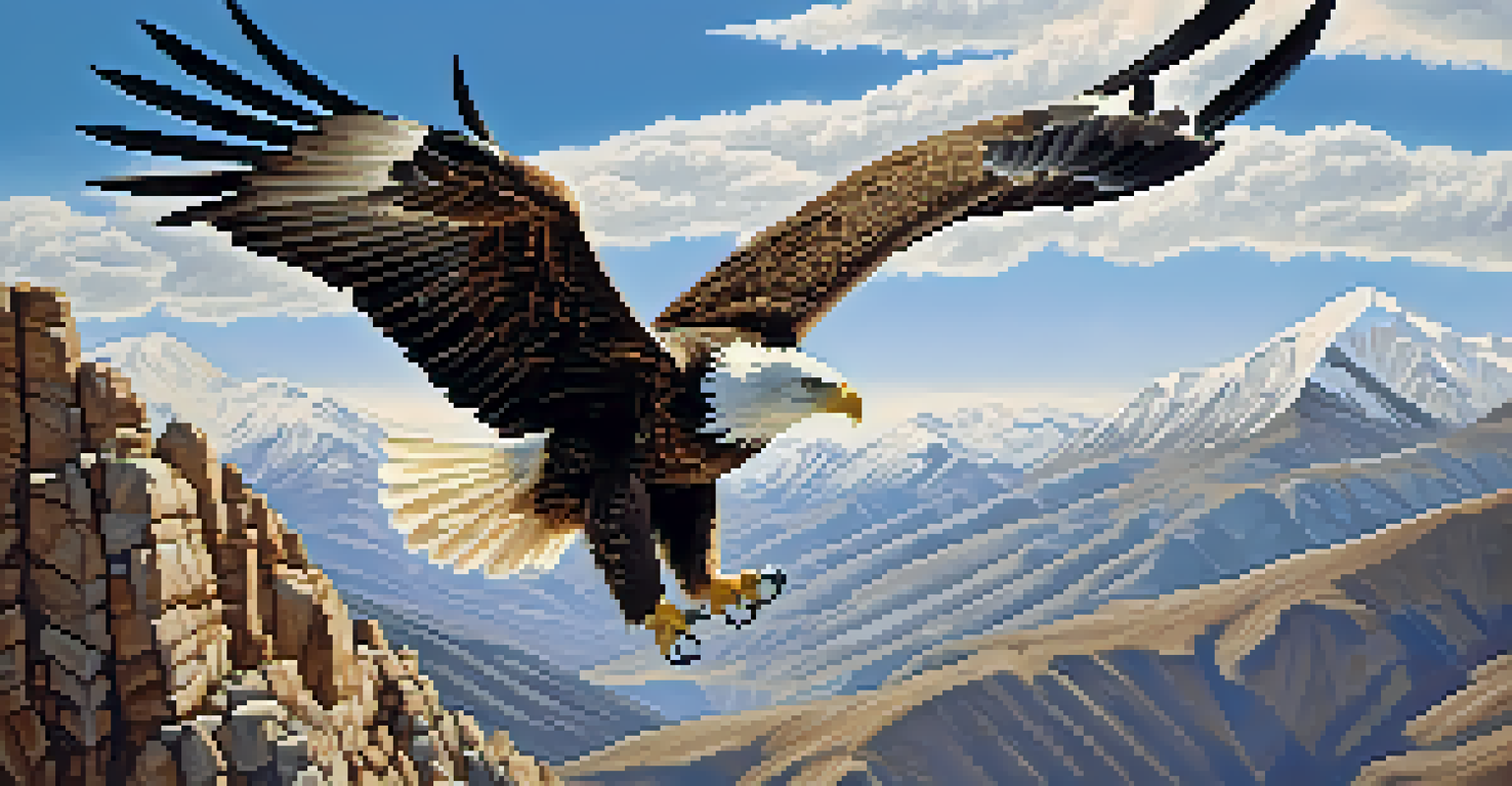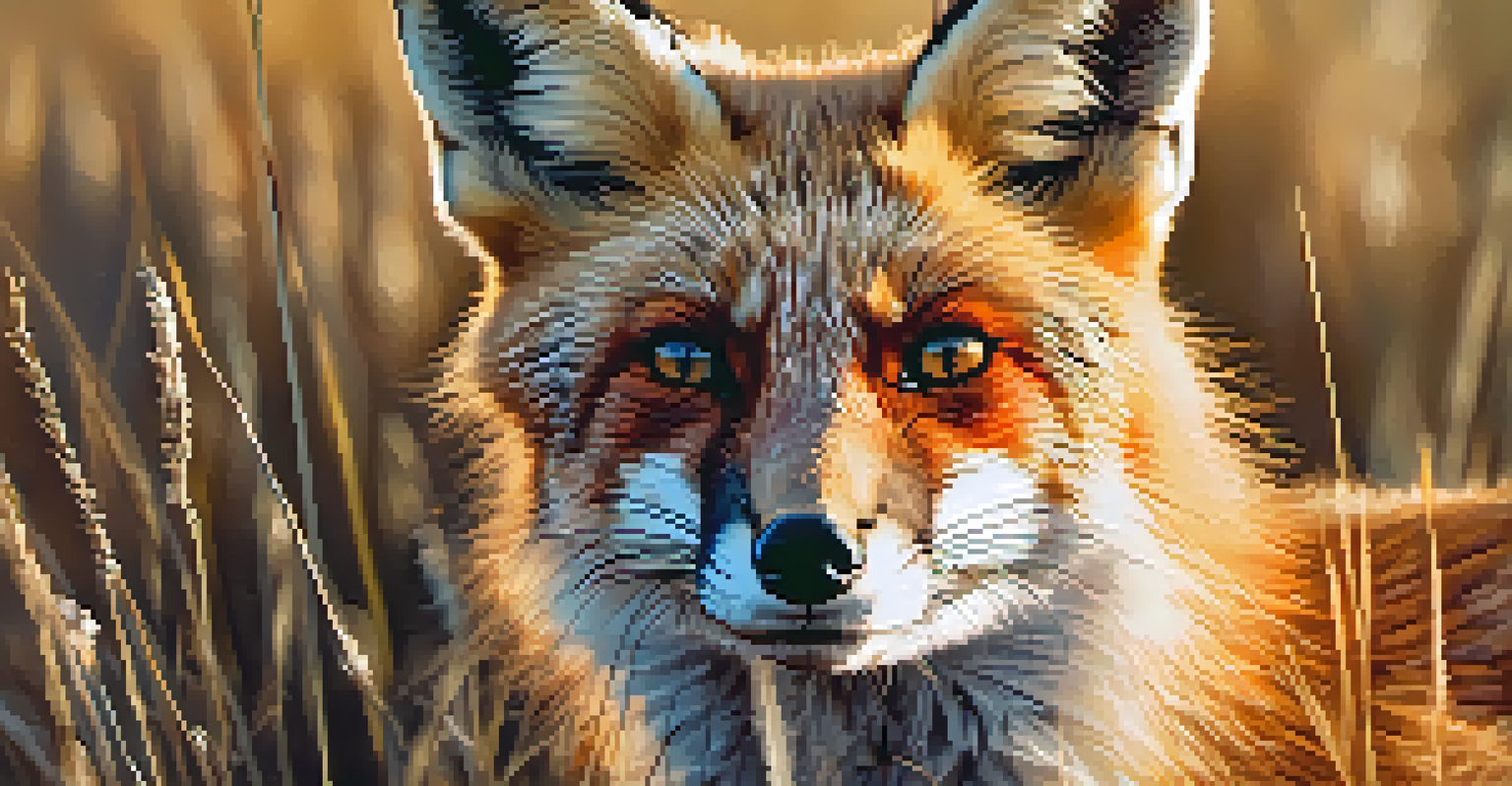Wildlife Watching: Planning Your Nature Exploration Trip

Understanding the Basics of Wildlife Watching
Wildlife watching is more than just spotting animals; it's about connecting with nature. It encourages us to slow down and appreciate the beauty around us, whether it's a majestic eagle soaring overhead or a deer grazing in a meadow. Understanding what wildlife watching entails helps set realistic expectations for your adventures.
In every walk with nature one receives far more than he seeks.
Before you head out, familiarize yourself with the local fauna in your chosen area. This can enhance your experience, allowing you to identify species and understand their behaviors. It’s like going to a concert—you wouldn’t want to miss your favorite band because you didn’t know they were performing!
Remember, wildlife watching is also about respecting the animals and their habitats. Keep a safe distance, stay quiet, and follow local guidelines. This not only ensures your safety but also protects the wildlife, allowing future generations to enjoy these experiences too.
Choosing the Right Destination for Wildlife Watching
Selecting the perfect destination can make all the difference in your wildlife watching experience. Consider locations known for rich biodiversity, such as national parks or wildlife reserves. For example, Yellowstone National Park is famous for its diverse ecosystems and abundant wildlife, making it a top choice for enthusiasts.

Research seasonal patterns, as some animals are more active at certain times of the year. For instance, if you're keen on seeing migratory birds, spring and fall are the best times to visit wetlands or coastal areas. Knowing when to go can significantly enhance your chances of spotting your desired wildlife.
Respect Wildlife and Their Habitats
Maintaining a safe distance and following local guidelines is essential for protecting both wildlife and their environments.
Additionally, think about the type of wildlife you want to see. Are you interested in marine life, birds, or mammals? Each destination offers unique opportunities, so tailor your choice to your specific interests to ensure a fulfilling experience.
Planning Your Trip: What to Bring
Packing the right gear is essential for a successful wildlife watching trip. Start with binoculars—these are your best friends in spotting distant animals without disturbing them. A good pair can make the difference between just seeing a blur in the distance and enjoying a detailed view of a rare bird or animal.
The clearest way into the Universe is through a forest wilderness.
Clothing is another important aspect. Opt for comfortable, weather-appropriate attire that allows for easy movement. Layering is key, as temperatures can fluctuate during the day, and you want to be comfortable while waiting patiently for that perfect sighting.
Don’t forget to bring essentials like water, snacks, and a camera! Staying hydrated and energized will keep your spirits high as you explore, and capturing those moments can create lasting memories to share with friends and family later.
Understanding Wildlife Behavior for Better Viewing
Gaining insight into animal behavior can greatly enhance your wildlife watching experience. Many animals have specific routines—like feeding times or resting spots—making it easier to anticipate where and when you might see them. For instance, if you're interested in deer, learning about their feeding habits can help you know the best times to look for them.
Moreover, being aware of the environment can provide clues about animal activity. For example, if you notice fresh tracks or scat, it’s a sign that animals have recently passed through the area. This knowledge can lead to exciting discoveries and enrich your understanding of the ecosystem.
Plan for a Successful Trip
Choosing the right destination and packing appropriate gear can significantly enhance your wildlife watching experience.
Lastly, patience is crucial. Wildlife is unpredictable, and sometimes you might have to wait for a while before seeing anything. Embrace the stillness and enjoy the sights and sounds around you—it’s all part of the adventure!
Capturing the Perfect Wildlife Photos
If photography is part of your wildlife watching plan, having the right equipment can help you capture stunning images. A zoom lens can allow you to photograph animals from a distance without disturbing them. However, don’t worry if you don’t have professional gear; even a smartphone can take great shots with the right technique.
Remember to consider lighting conditions when taking photos. Early mornings and late afternoons often provide the best light for capturing wildlife in their natural habitat. The golden hour can create beautiful, soft lighting that enhances the colors of the scene.
Additionally, practice ethical photography by keeping a respectful distance from animals. Avoid using flash, as it can startle wildlife and disrupt their natural behavior. Your goal is to observe and document, not to interfere with their lives.
Safety Tips for Wildlife Watching Adventures
Safety should always be a top priority when engaging in wildlife watching. Familiarize yourself with the types of wildlife in the area and their behaviors to avoid potentially dangerous encounters. For instance, while bears can be fascinating to see, it's crucial to maintain a safe distance and know how to react if you come across one.
Always follow local guidelines and regulations regarding wildlife encounters. This might include staying on designated trails, not feeding animals, and respecting barriers. These rules are in place for a reason—they protect both you and the wildlife.
Capture Memories Ethically
Using the right photography techniques and respecting wildlife is crucial for enjoying and documenting your adventures.
Lastly, travel with a buddy whenever possible. Not only is it more enjoyable, but having someone with you can enhance safety. Plus, sharing the experience with a friend can lead to even more memorable moments as you explore nature together.
Reflecting on Your Wildlife Watching Experience
After your wildlife watching adventure, take some time to reflect on your experiences. Consider keeping a journal where you can jot down what you saw, how it made you feel, and any new insights you gained about the natural world. This can deepen your appreciation for wildlife and encourage you to plan future trips.
You might also want to share your adventures with others. Whether through social media, blogs, or casual conversations, sharing your experiences can inspire friends and family to explore nature themselves. Your enthusiasm can be contagious!

Finally, consider ways to contribute to wildlife conservation efforts. Engaging with local organizations or participating in conservation activities can help protect the habitats you love to explore. Making a positive impact on the environment can be a rewarding way to honor your wildlife watching experiences.